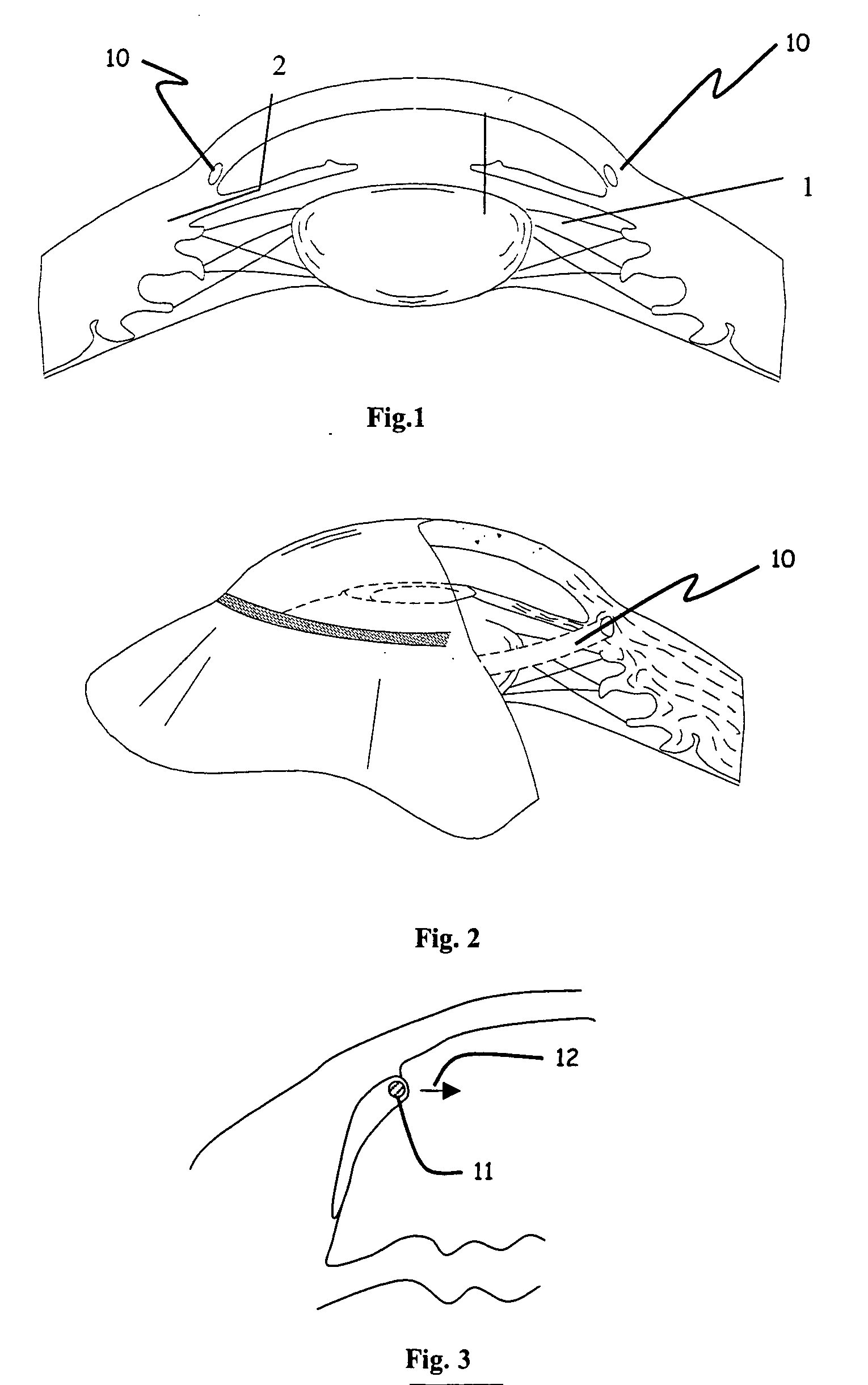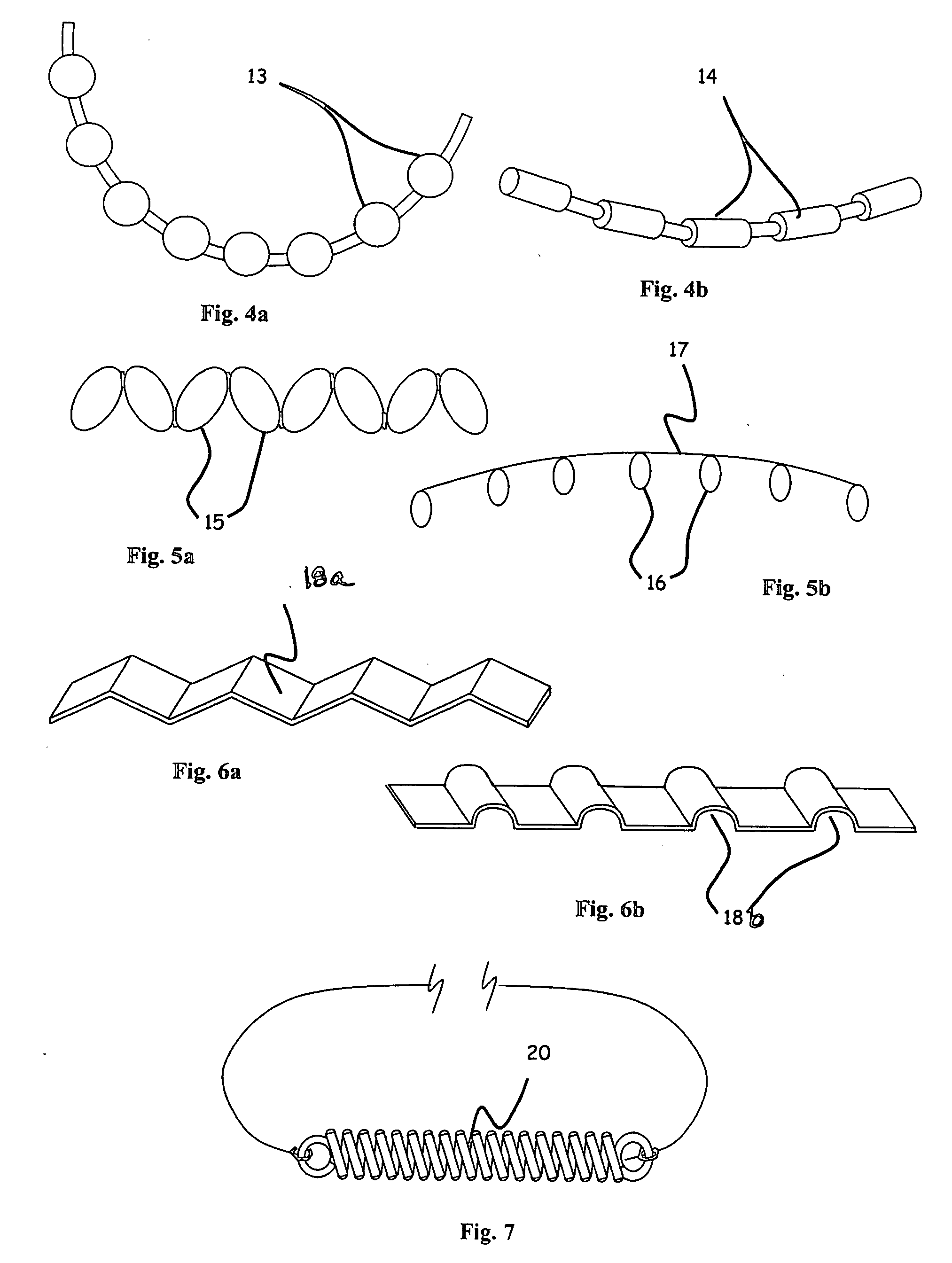Ophthalmic implant for treatment of glaucoma
a technology of ophthalmological implants and glaucoma, which is applied in the field of ophthalmological implants for treatment of glaucoma, can solve the problems of surgical treatment, limited the ability of the inner wall to be distended outward, and does not teach a way to increase the aqueous outflow by non-drug induced tension, etc., to achieve sufficient tensioning force, increase fluid outflow, and increase fluid permeability
- Summary
- Abstract
- Description
- Claims
- Application Information
AI Technical Summary
Benefits of technology
Problems solved by technology
Method used
Image
Examples
example 1
[0058] Human whole globes were obtained from a qualified tissue bank. The eyes were inflated to approximately 10 mm Hg anterior chamber pressure and placed in a cup-shaped holder. A single flap scleral dissection was performed and Schlemm's canal was exposed, allowing access to the ostia of the canal. A 200 micron diameter ophthalmic microcannula (iTRACK™ microcannula, iScience Surgical Corp.) was used to cannulate the entire canal circumference. The microcannula was designed to provide a means of expanding Schlemm's canal through the injection of viscoelastic materials, and comprised an illuminated beacon tip to provide visual indication of the location of the microcannula when in the canal.
[0059] The microcannula was primed with viscoelastic (Healon GV, Advanced Medical Optics, Inc) and inserted into the ostia of the canal. Using a minimal amount of viscoelastic injection to open the canal and provide a lubricious environment, the microcannula was advanced completely around the c...
example 2
[0060] A human whole globe was prepared similar to Example 1 above. The globe was placed in a room temperature bath of phosphate buffered saline, and a 30 gauge infusion needle placed through the cornea to provide fluid input. The needle was attached to a reservoir containing phosphate buffered saline set at a height of 5.4 inches over the height of the Anterior Chamber to provide a constant pressure infusion of 10 mm Hg. The fluid circuit also comprised a digital flow meter (Sensiron, Inc) to record the flow rates on a PC computer. A stabile baseline flow reading was taken prior to surgical cut-down. Surgical access and implant placement as described in Example 1 above was performed, with the exceptions that a two-flap access was used similar to viscocanalostomy and deep sclerectomy surgery, and the filament was not tied. The ends of the filament were brought out from under the surgical flap and the surgical flap was carefully sealed with cyanoacrylate adhesive without adhering the...
example 3
[0062] In another set of experiments, each end of the 28 micron diameter filament implanted in Schlemm's canal was attached to 30 gram mechanical force gauges (Wagner Instruments) in a fixture such that tension forces could be applied to the filament ends. Outflow measurements were taken at three different intraocular pressure values and with varying tension. The value of the Outflow Facility was calculated by dividing the outflow rate in ul / min by the pressure in mm Hg. The experimental results indicate an optimal value for increasing outflow facility in a tension range of approximately 6-10 grams force along the entire length of the implant long axis, or 0.159 to 0.265 grams per mm arc length of canal for a nominal 12 mm diameter of curvature canal. Outflow was significantly increased in the tension range of 1 to 11 grams force or 0.027 to 0.292 grams force per mm of arc length of the canal for a nominal 12 mm diameter of curvature canal. Further increases in tension led to decrea...
PUM
 Login to View More
Login to View More Abstract
Description
Claims
Application Information
 Login to View More
Login to View More - R&D
- Intellectual Property
- Life Sciences
- Materials
- Tech Scout
- Unparalleled Data Quality
- Higher Quality Content
- 60% Fewer Hallucinations
Browse by: Latest US Patents, China's latest patents, Technical Efficacy Thesaurus, Application Domain, Technology Topic, Popular Technical Reports.
© 2025 PatSnap. All rights reserved.Legal|Privacy policy|Modern Slavery Act Transparency Statement|Sitemap|About US| Contact US: help@patsnap.com



